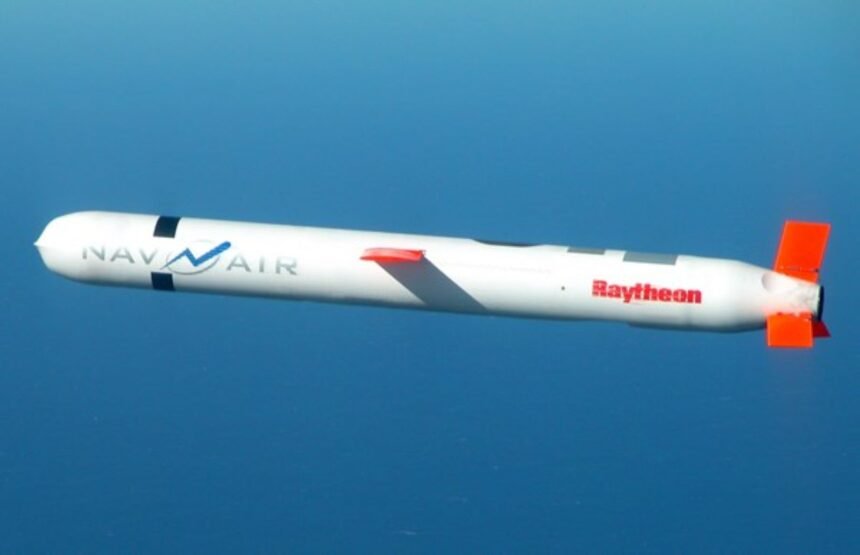Ukraine provided the United States with a set of roughly 200 proposed targets in Russia during a diplomatic visit in fall 2024, according to military analyst and Ukrainian reserve major Oleksiy Hetman. The list—intended to degrade Russian combat capability along the front line—was delivered to Washington before the 2024 U.S. presidential election.
Hetman stressed that Ukraine’s targeting approach focuses on military and logistical infrastructure (command nodes, supply hubs, front-line support), not civilian sites, and that Kyiv had already shown how it selects long-range targets through strikes with domestic systems like Neptune and Flamingo.
Tomahawk overview (key specs)
- Type: Subsonic cruise missile (first fielded 1983; continuously modernized)
- Length / diameter / wingspan: ≈ 6.25 m / 0.52 m / 2.67 m
- Weight / warhead: ≈ 1,450 kg total; ~450 kg warhead
- Range: ~900–2,500 km (variant-dependent)
- Speed: ≈ 880–900 km/h
- Warhead types: blast-fragmentation, penetrating/HEAT (nuclear option retired)
- Launch platforms: surface combatants, attack submarines (SSNs/SSGNs), and Typhon mobile land launchers
- Estimated unit cost: ≈ $1.3 million (based on a 2026 U.S. procurement batch)
Launch options & land-based Typhon system
Tomahawks can be fired from ships, submarines, or land-based launchers. The SMRF Typhon mobile system provides a land-launch option; Defense News (spring 2025) reported two Typhon batteries deployed (one in the Philippines task force, one in Hawaii). A Typhon battery generally includes four launchers, a command post, and support vehicles. Analysts note some surplus launcher hardware and potential for integration onto other wheeled chassis.
Target reach and strategic implications
The Institute for the Study of War (ISW) mapping suggests:
- At ~1,600 km range: ~1,665 Russian targets are reachable.
- At ~2,500 km range: ~1,945 targets become feasible—reaching deep into the Urals (military plants, airfields, refineries).
If used against Russian military infrastructure, a Tomahawk campaign could degrade logistics, air support, and repair capacity, shaping battlefield dynamics. But analysts flag significant risks: escalation management, the political decision to strike sovereign Russian territory, and the legal/political fallout of such strikes.
Operational context & supply constraints
Analysts and reporting (Pentagon consultant Ruben Johnson, spring 2025) warn of Tomahawk inventory constraints—operational usage and budgetary uncertainty have strained stocks. The U.S. has procured new missiles (e.g., a 56-missile order for 2026), but capacity and resupply timelines factor into any transfer decision.
Why this matters now
- Ukraine has already shared detailed targeting options with the U.S., signaling preparedness and a focus on military objectives.
- Tomahawk transfers would provide Ukraine a long-range precision strike capability beyond existing indigenous systems but would also raise escalation and diplomatic risks.
- The combination of available launch platforms (sea/undersea/land Typhon) and Tomahawk variants makes the system flexible, but political authorization, logistics, and supply remain decisive.
Bottom line: Kyiv’s list gives Washington a concrete starting point for assessing the military utility of transferring Tomahawks. Any U.S. decision would weigh the operational benefits for Ukraine against escalation management, legal/political consequences, and missile stock constraints.





